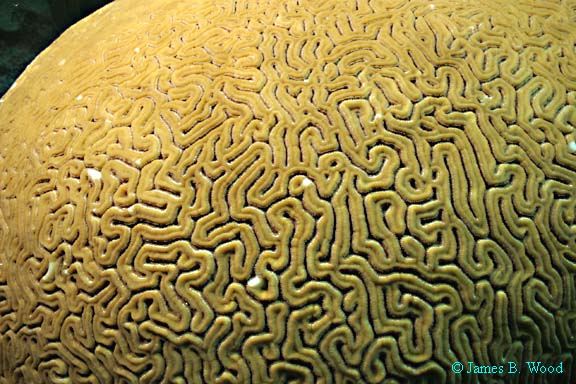 Getting around the problem of a lack of precise temperature measurements from anything but the most recent past is one of the most fascinating aspects of climatology. Today I came across yet another study that supports the notion that the earth, and more specifically the oceans, are warming at the rate climate change models predict, and it's so... cool... I just have to write about it.
Getting around the problem of a lack of precise temperature measurements from anything but the most recent past is one of the most fascinating aspects of climatology. Today I came across yet another study that supports the notion that the earth, and more specifically the oceans, are warming at the rate climate change models predict, and it's so... cool... I just have to write about it.
Most anyone who has even made a cursory attempt to understand the scientific underpinnings of the consensus on global warming -- by watching An Inconvenient Truth, say -- will be familiar with ice-core data, for example. Air bubbles trapped for as long as 650,000 years in Antarctic or Greenland ice can provide reliable measurements of the greenhouse gas concentrations back then. But -- and here's the really clever part, through the magic of proxy data they can also give us a good idea of what the ambient temperature was when the ice froze.
In the case of ice-core proxy data, glaciologists measure the ratio of two isotopes of oxygen, one heavy and one light. Oxygen is, of course, part of every water molecule, and because warmer temperatures will cause more evaporation of water, and because the lighter of the two isotopes evaporates more readily than the heavier, the ratio of oxygen isotopes laid down in the form of snow will reflect the temperature that winter.
This is pretty neat stuff. Similar strategies are used to analyze the isotopic composition of the structure of fossils called foraminifera and other tiny creatures that build their skeletons from elements in sea water. But proxy data can be tricky. Disagreements over attempts to pool disparate proxies, including tree-ring measurements, bedeviled the authors of the first "hockey stick," many will no doubt recall. (The infamous graph has since been corrected, validated and confirmed by a dozen other independent efforts, although that hasn't stopped less informed and disingenous climate change deniers from claiming it undermines, rather than supports, the general consensus that our fossil-fuel-burning ways are warming the planet.
The new study uses the same basic approach as ice-core and foraminifera proxies, but instead measures the ratio of strontium to calcium found in the hard bodies of several species of Atlantic corals, including the brain coral Diploria labyrinthiformis pictured above.
The abstract for "Recovery of temperature records from slow-growing corals by fine scale sampling of skeletons" by Anne L. Cohen and Simon R. Thorrold of the Woods Hole Oceanographic Institution is available here. But only those with access to Geophysical Research Letters can get the whole thing. (PDF)
Cohen and Thorrold calibrated the Sr/Ca-temperature relationship using modern records. It turns out that the corals take up (and lay down) more strontium relative to calcium when the surrounding water is cool, and the ratio falls as the water warms. They then looked at what the ratio was back in the late 18th century to come up with an estimate of sea-surface temperatures back in the decades following Darwin. Their result: approximately 1°C cooler than today. At least around Bermuda.
Which is pretty much in line with what other estimates and climate models say.
These are the days when I wish I hadn't been distracted by other places and things, and continued to pursue a career in marine biology. Maybe I could have been studying coral growth patterns in Bermudan waters, too.
Did you happen to read Wegman, Scott, & Said's critque of the analysis? The hockey stick requires a specific non-standard normalization of the data. Change the normalization and the result changes. Feed in AR(1) noise, choose the right center and the hockey stick appears.
If an "independent" analyst repeats the error, they get similar results. If you look at the figures linked to your link, you can see that they are both centered similarly. It is basic multivariate analysis. By choosing your center, you can emphasize or deemphasize various characteristics in the data. This is not immediately obvious unless you've had a few grad courses and fooled around with the methods.